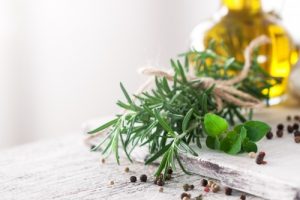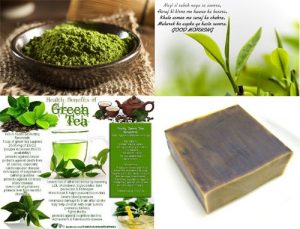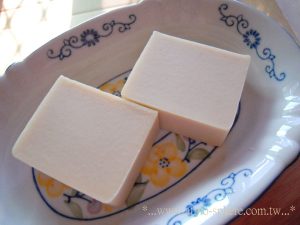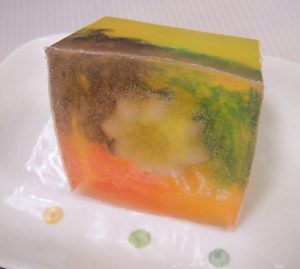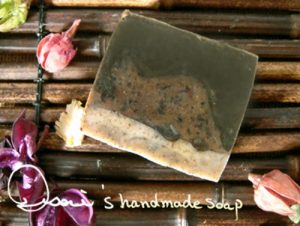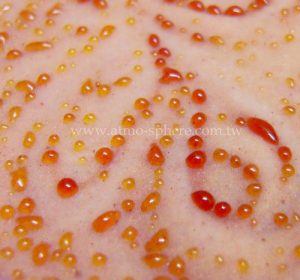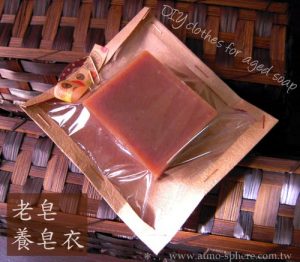Your cart is currently empty!
SHARE | Facebook fans page LIKE 
綠意生活 Green Life info ★ 實用生活資訊 Update: 2021/11/27
?? This article uses auto translate to English,and is roughly corrected. We will check and update by the time. Thanks for your reading ??
Soda ash is an occasional situation that has been encountered in handmade soap for many years. For handmade soap sellers, the appearance of uninvited guests on the surface is really unpleasant. If it is a uniform frost-like distribution, it would be okay, but it is often very bad. Spread evenly and randomly. Some sellers will repair the soap edges, so it's okay, but I am used to not repairing it without repairing it, and try to maintain the natural appearance as much as possible, which can be considered as saving a lot of work. If the handmade soap has unsightly white soda ash, the previous method is to cut or scrape off the upper layer. When cutting it, I feel reluctant and helpless.…
Recently, I began to study seriously whether there is a way to prevent this white ash from appearing. I read the articles shared by many netizens at home and abroad, and did some experiments. Finally, I have some experience. Reference.
…
I only probably knew that this is harmless soap powder, not moldy, and does not affect the quality of the soap, but I haven't studied it in depth. What the hell are these white powders? This is the first question I want to study. The ugly appearance is second, whether it will irritate the skin or not is what I think is more important.
…
First, I looked for explanations from many Taiwanese soap friends, chemical professionals and handmade soap teachers. These soda ash are actually soap powders (soap crystals) that have not been fully saponified, and are the product of the combination of free molecules of sodium hydroxide and carbon dioxide in the air. . When the handmade soap is put into the mold to keep warm, the temperature of the soap solution will increase, and the oil and lye will combine to carry out the saponification reaction. These soap powders are small crystals that have not become large crystals, and they can be regarded as semi-finished products of the saponification production line.
…
With a brief understanding, I still want to track down what it is. After checking foreign information, I found that not only Taiwanese are afraid of white powder, but many foreigners are also very concerned about this strange white ash. There are quite a few. The article is discussing the phenomenon of white powder (white ash/soda ash).
Finally I found a very detailed article, it turns out that the true face of this soap ash is !!"Soda ash" (sodium carbonate, soda ash) !!
…
Soda powder should be familiar to everyone. It is a food preparation material and an alkaline cleaning product that can decompose oil stains. It is divided into food grade and industrial use. A small amount of skin contact for a short period of time will not be harmful, but it is also not suitable for directly cleaning the skin. It will over-wash the sebum and cutin.
…
Knowing that the white soda ash of the original soap is baking soda is more comfortable, and the soda ash is usually washed off as soon as the first flushing, and it will not affect the quality of the whole soap.

How to avoid soda ash
Most of the explanations for the formation of soda ash are caused by not sealing the mold during heat preservation, allowing the soap liquid to come into contact with the air or the temperature (temperature difference) is not well controlled. Generally, the soap should be kept in a box for at least 24 hours before it can be released after the soap is made. If the heat is exposed to air, soda ash will be produced. Another way to say that during saponification, if the temperature is too high and the surface sweats (small water droplets), white powder will also be formed.
…
In my experience, soda ash is formed when the surface comes into contact with air. This seems a bit inconsistent with my situation. But the formation of small water droplets by sweating is indeed easy to form soda ash. Therefore, if the weather is relatively hot during heat preservation, do not pack the incubator tightly without ventilation. Excessive heat preservation will easily cause sweating and produce small water droplets.
…
Because I often make more than a dozen different recipes of soap in a intensive period of time, the production process is similar, but some recipes are prone to soda ash, and some do not. After studying the formulas that will not be followed, the temporary conclusion is that the proportion of stearin (shea butter, cocoa butter, white brown (hard brown)) is high, the TRACE is fast, the temperature before the mold is high, and the Slag powder, plant powder, the above is less white powder. That is, if the saponification speed is fast enough, the soap will be hit to the TRACE semi-solidified state and then put into the mold, so that there is less chance that the unsaponified combined alkali has the opportunity to combine with the air moisture to form a soda ash.
…
In addition, the types of essential oils are sometimes the cause of soda ash. When the soaping temperature is lower than 38°C (100°F), LIGHT TRACE will be put into the mold. If it is too cold, too thin, not thick enough, it will easily have soda ash, and the whole soap will have soda ash.
…
In short, there are many reasons for soda ash, and sometimes it is really hard to prevent.
…
Prevention of soda ash
…
■ In advance, Spray alcohol on the top when pouring soap in the mold
(Foreign information) This method is shared by foreign experts. If your soap recipe has white soda ash, next time you can spray the top layer with 91% or 99% alcohol after the soap is put into the mold for about 10-15 minutes. The soap mold is wrapped in a plastic bag with plastic wrap and covered with a lid to keep it warm, which can significantly improve the reduction of soda ash.
…
■Water reduction 10%
(Foreign information) This method is suitable for a small amount of ultra-fat recipe, and a thick (TRACE fast) recipe
can avoid the situation that the whole soap has soda ash
…
■adds 0.5%-2% beeswax/or/cocoa butter
(Foreign information) This method is suitable for recipes where TRACE is not thick enough (TRACE is very slow)
can avoid the situation that the whole soap has soda ash
…
X ■Before demolding, let it cool down and then open the lid(avoid soaping and the room temperature difference is too large)
After putting the soap in the mold for 18-24 hours, remove the incubator first, let it cool at room temperature for at least 3 hours before opening the lid. This method depends on the room temperature at the time.
//**2016.1.15 Experimental observation update: This method is useless, only a little bit less**//
…
According to long-term observations, thick soda ash usually forms on the upper part of the inner ring, but there is less soda ash on the outer periphery. The soap on the soaping utensils will solidify after the next day, so there will be no soda ash, so it is judged The soda ash is formed because the temperature in the center of the soap body is higher than normal temperature when the lid is first opened, and more water vapor will be discharged. These water molecules with free alkali combine with carbon dioxide in the air to form a thick and obvious soda ash. In other words, the inner ring of the soap has undergone the GEL STAGE jelly effect period, and it has a greater power to push more unsaponified small soap crystals (soda/sodium carbonate) upwards than the relatively high temperature of the surrounding area.
…
Actually, the entire periphery of the soap is also a little soda ash, but because it is very small, it will not affect the appearance of the covering soap itself. Usually, the outer color of the soap will be lighter after the film is removed, which is the reason. In addition, small water droplets (sweating) usually appear above the periphery outside the jelly area. They are formed by the combination of saponified glycerin or incompletely saponified fatty acids and water vapor. They should be wiped off to avoid the formation of oil spots.
…
What should I do if I already have soda ash?
■Steaming method
Though already know how to avoid soda ash, but if soda ash is formed because of the recipe, there are ways to solve it. As far as I know, some teachers in the market teach how to avoid soda ash in the courses. Those with a budget should be worth checking out. If you have no budget like me, you can also try the vapor elimination method shared by netizens. Most of them are steamed in an electric pot for a while, the soda ash will be steamed off. But be careful in the process. This is also considered a hot method. If the time is not well managed, the whole piece will be steamed softly and the appearance will be full, but the whole piece will become ugly and ruined.
…
One day I thought I could use the steam of the coffee oven to make milk froth to try. When doing the first experiment , I was burnt by the steam, but the experiment was successful, with 70 score points. The 30 points deducted is because the experiment was done with diced pieces. When the soda ash that has been steamed to the upper layer is missing, wet and viscous soap will flow on both sides, and the color and texture of the steamed product is different from that of the unsteamed product. . So when steaming, it’s best not to steam it all the way to the end. It’s best to steam it quickly and remove it, then turn it to steam the other side.
…
↑ The soda ash came out after half an hour after demolding.
(I shouldn't be in a hurry to demold.. Otherwise, it can be steamed for a longer time with the steaming of the mold, and it is less likely to recur, and it is not afraid of the water flowing to the side)
↑ Steam is ready to serve ~~
↑The right side is steamed, the left side is not yet steamed
↑The surface is wet and sticky just after steaming, you can put on gloves and wipe it with a paper towel.
This photo is a finish work using brush to and wipe and make it look neat. There is no time to take the picture of the wet and sticky
look of the soap , my hands were busy .
(if you do well with steam spray that can let soap get wet evenly, then there is no need for special brushing.)
↑ Compare after steaming and before steaming↓
After testing it two or three times, the conclusion is that it is best to steam the soap *before it is removed from the mold. If it has already been cut into pieces, do not use the steam method.
Steaming method is not 100% working, sometimes when just after steaming it looks ok, , After a while, there're some soda ash will come out when the soap is getting dry. You still have to cut it all at this time~>.<~
↑ The day before was a waste of time and joy, 9 out of the 10 soap bars appeared soda ash again, although the quantity and area became fewer and smaller
↑ All were sent to the cutting table, only 1 soap escapes.
When writing this article., I did more study and get to know there's a "cold rinse method", and "alcohol prevent method". Feel sorry that I cut off their tops too rashly. This is a pity
…
…
V■ Cold water Rinse method
(Foreign information) Use a paper towel or nylon material (bath towel/bath ball) to soak in cold water to remove the soda ash on the surface of the soap.
[2015/11/14 add remark] After my experiment, this method can indeed eliminate soda ash, only a little soda ash will appear the next day.
//**2015/11/14**UPDATE//
V★Alcohol spray soap method
This method is a one I think it up. When the soap is put into the mold and kept warm and the next day before demoding, use an alcohol spray bottle (I use 75% concentration) to spray the entire top of the soap evenly without wiping. It will naturally dry out after a few hours. And the soda ash are all gone. The color and texture of the soap surface look also very natural. This method is really good!
…
If the soda ash is very heavy in some areas, you can wash off the soda ash first with cold water , and then use a (paper) towel dipped in alcohol to wipe the whole surface.
…
Special circumstances soda ash
The soda ash mentioned above is a situation encountered by most people. It usually occurs within 1-2 hours before and after demolding, and most of it is on the upper layer (it is exposed to air during keep warm period). Sometimes the soda ash will gradually emerge in the previous week when it's curing.
…
There is another kind of soda ash. soap crystal appears on the surface after being left for a period of time, which is easy to be produced after being left in a closed plastic package for a period of time. This soda ash may also be a small crystalline powder of soda , some people call it "soap crystals". Its shape is uglier, the particles are larger and a bit like herpes, and the texture is relatively soft, which can be easily scraped off.
My combo-grain soap is more prone to this situation. I think it is that the air get into the gap when the small soap grains and soap liquid are mixed and stirred, so a lot of soda is also produced inside the soap. Although the saponification is completed after one month of cure. But afterwards Still undergoing some physical and chemical evolution, the soda and glycerin in the soap are easily pushed out from the gap.
…
//**2016.1.15 UPDATE**//
This kind of soda ash comes out after the soap has been fully cured should be "glycerin crystal". The soap has been left for a period of time. Although the saponification reaction has been completed and it has become a solid, the interior will still be affected by the condition of the
temperature and humidity of the storage environment. The constituent molecules of soap (sodium fatty acid), free fatty acid, soda (small soap crystal/sodium carbonate), glycerin, etc. will still move and push. Some people say that the appearance of this kind of glycerin crystals means that this is a good (cold-process) CP soap, or even the best. This should be regarded as a kind of thought based on experience.
…
Soap with glycerin crystals appear. One possible is that the soap itself contains more glycerin, and the other possible is that the humidity and temperature of the storage environment are relatively high. Glycerin itself is water-absorbing, and it will be smoothly squeezed out when it absorbs water molecules and expands. Glycerin is not oil, it is a moisturizing ingredient. Of course, more glycerin is a good thing, but glycerin crystals on the surface of soap does not necessarily mean that there is more glycerin in this soap. Maybe also due to the storage environment is unstable and not deliberately controlled, sometimes dry or cold. sometimes humid ,hot and stuffy. It's nothing bad with going with the flow.
…
Any way, this glycerin soap crystal/soap ash is also safe and it's not mildew. The soap is not spoiled with this kind of soap crystals. More than that, it is usually a mild soap with nearly complete saponification and had reduced alkalinity to the lowest possible level.
…
I hope that if my customers or soap lovers have chance to read this article, they can understand and accept handmade soap with soda ash. Actually, it is an innocuous natural material, and is really not a bad thing.
★ Soap calculator web tool
【Reference Link】
( Easy Lohas Handmade Soap) The forming and prevention of white soda ash
( Easy Lohas Handmade Soap forum) White soda ash , soap crystal structure/solution
…
(Little Peacock Climbing Number) About [Soap White Powder (Dry)]
(CAKE PARTY) The second discussion of the white ash phenomenon~~ You will know whether it will become white by looking at it
…
(Soap Queen) Explaining and Preventing Soda Ash
(about)What is That Ashy White Stuff On My Soap?
…
How to distinguish baking soda, soda, and soda , What is the purpose of each?
🌻🐥Nice eBook【100 Super Healthy Sweet Treats & Dissert Recipes】 | Cleverly use vegetables and raw materials to make no-bake and no-cook healthy nutritious pastries, cookies, snacks, ice cream, weight management meals. Taking into account nutrition and taste. Most are sugar-free, low-calorie, ketogenic diet, gluten-free. 😊🌲→ Click this link can have more exclusive free bonus ebooks
Facebook fans page LIKE  NEWSLETTER | SHOPPING | DONATE US NEWSLETTER | SHOPPING | DONATE US Any support or friendly feed back are appreciated ,THANK YOU! |




